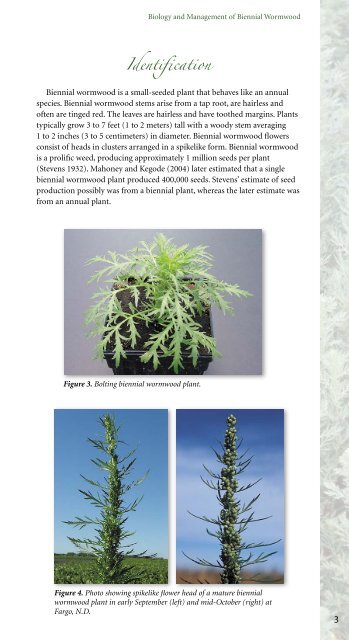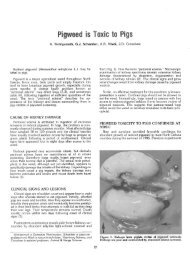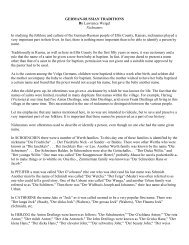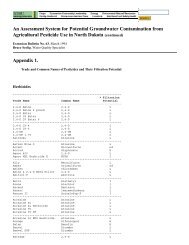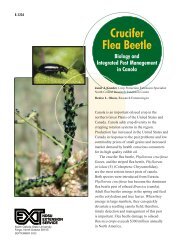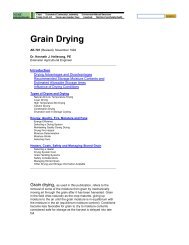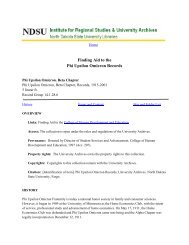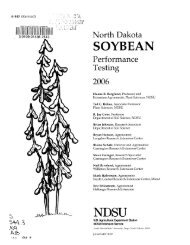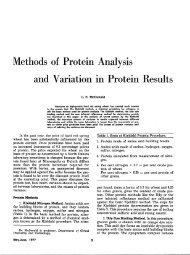Biology and Management of Biennial Wormwood
Biology and Management of Biennial Wormwood
Biology and Management of Biennial Wormwood
You also want an ePaper? Increase the reach of your titles
YUMPU automatically turns print PDFs into web optimized ePapers that Google loves.
<strong>Biology</strong> <strong>and</strong> <strong>Management</strong> <strong>of</strong> <strong>Biennial</strong> <strong>Wormwood</strong>Identifi cation<strong>Biennial</strong> wormwood is a small-seeded plant that behaves like an annualspecies. <strong>Biennial</strong> wormwood stems arise from a tap root, are hairless <strong>and</strong><strong>of</strong>ten are tinged red. The leaves are hairless <strong>and</strong> have toothed margins. Plantstypically grow 3 to 7 feet (1 to 2 meters) tall with a woody stem averaging1 to 2 inches (3 to 5 centimeters) in diameter. <strong>Biennial</strong> wormwood flowersconsist <strong>of</strong> heads in clusters arranged in a spikelike form. <strong>Biennial</strong> wormwoodis a prolific weed, producing approximately 1 million seeds per plant(Stevens 1932). Mahoney <strong>and</strong> Kegode (2004) later estimated that a singlebiennial wormwood plant produced 400,000 seeds. Stevens’ estimate <strong>of</strong> seedproduction possibly was from a biennial plant, whereas the later estimate wasfrom an annual plant.Figure 3. Bolting biennial wormwood plant.Figure 4. Photo showing spikelike flower head <strong>of</strong> a mature biennialwormwood plant in early September (left) <strong>and</strong> mid-October (right) atFargo, N.D.3


